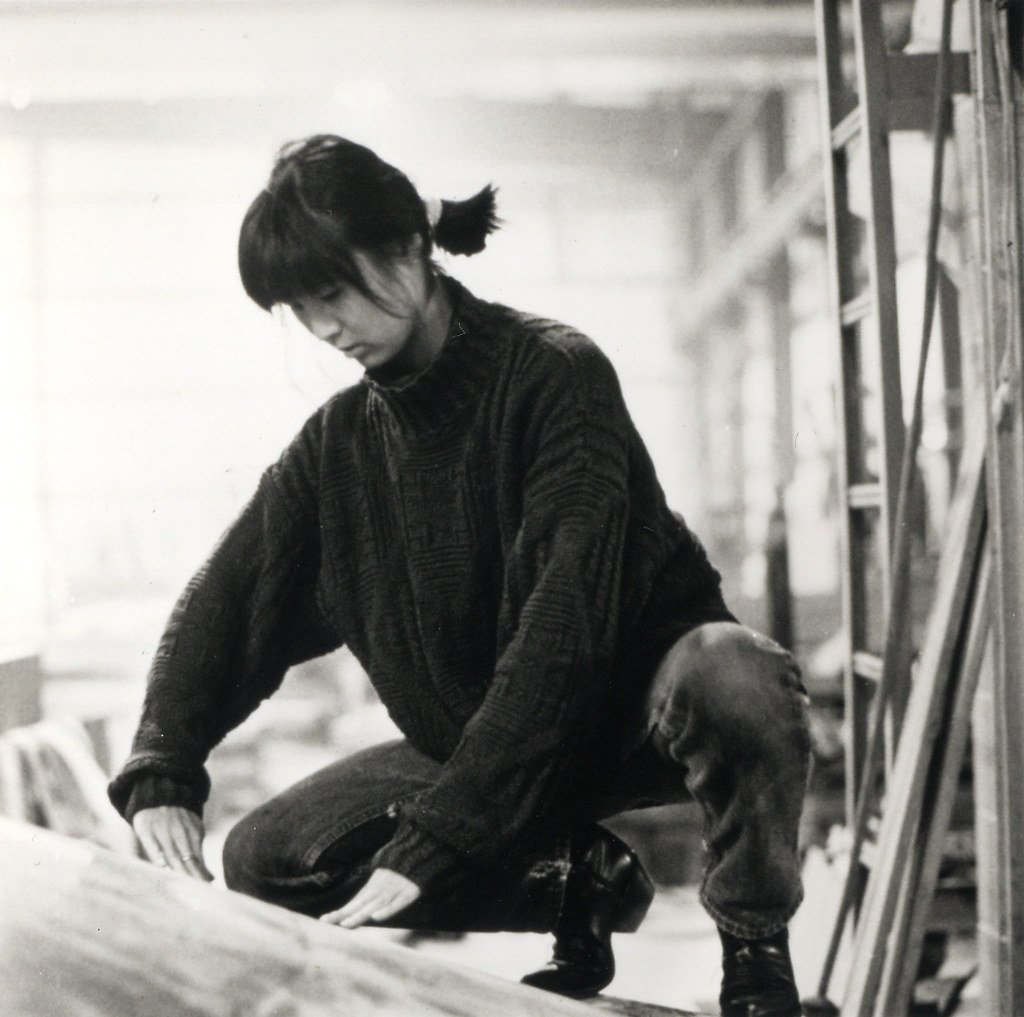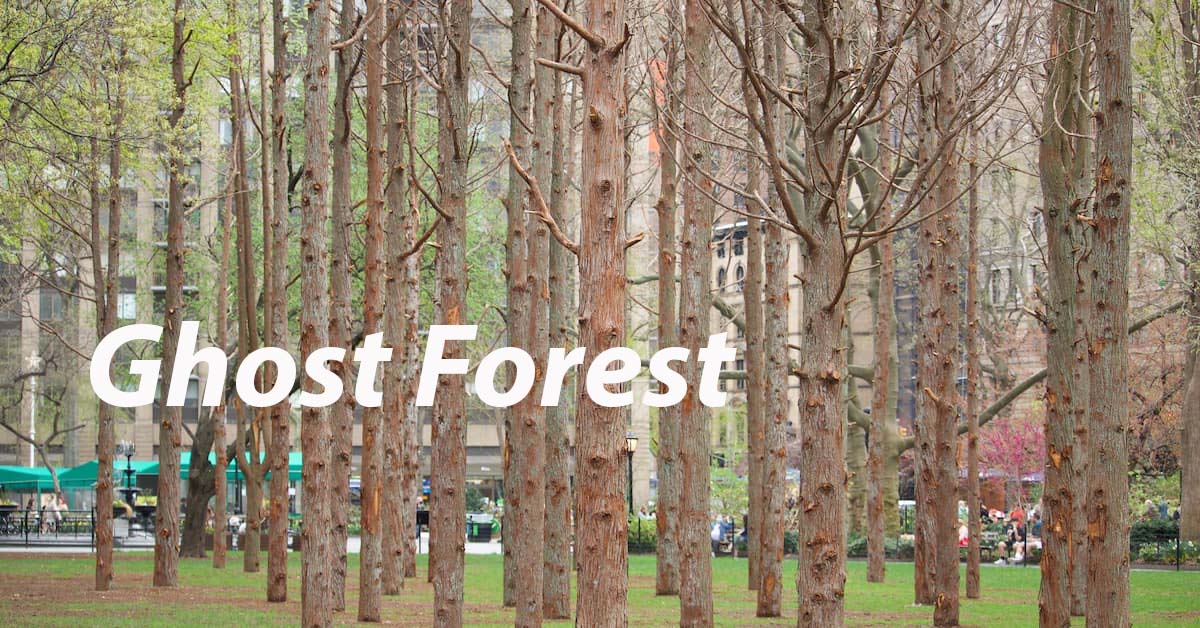NEW YORK CITY — How do you persuade naysayers that climate change is real, that the earth is fragile and needs protection? How do you call people to action to forestall environmental collapse and the natural world’s death?
American architect and sculptor Maya Lin‘s latest effort is “Ghost Forest,” an installation of 50 Atlantic white cedar trees, each some 40 feet tall, and each defoliated and dead. Looming over Madison Square Park like a warning, the trees look cadaverous.

“I wanted to create something that would be intimately related to the Park itself, the trees, and the state of the earth,” Lin tells Hyperallergic magazine about the installation, which will stand through Nov. 14.
Lin obtained the dead trees from New Jersey’s Pine Barrens. Gothamist describes why the trees died: forestland laid waste by extreme weather, the rise of sea levels, and the infiltration of saltwater.
Besides the dead trees to ponder, Gothamist writes, visitors to “Ghost Forest” will hear a “soundscape.” Created by Lin with assistance from the Cornell Lab of Ornithology, the recording features bird calls and sounds of animals that once lived in the New York area but are now extinct. The sounds of more endangered animals will be added, writes Gothamist. In collaboration with Carnegie Hall, park visitors will get an earful of meditative music. As a finale to the project in November, 1,000 native trees and shrubs will be planted in parks throughout New York’s five boroughs.
Given the visual power of Ghost Forest, it’s likely to stay in memory long after it’s removed. Brooke Kamin Rapaport, deputy director of Madison Square Park, credits the staying power of Lin’s work to how she calls attention to environmental concerns with “a minimal visual language of austerity and starkness.”
Lin is good at austere and stark imagery. You may remember that she won a national design competition for her Vietnam Veterans Memorial on the National Mall in Washington D.C. near Arlington National Cemetery. What can be more stark and austere than a lengthy black marble wall, partly buried in the earth and inscribed with the names of the dead and missing?

As Lin saw the memorial when awarded the commission: “I had an impulse to cut open the earth, an initial violence that in time would heal. The grass would grow back, but the cut would remain.”
But here’s the thing. Trees lost to climate change won’t grow back. What will remind us when the memory of Ghost Forest fades?
Perhaps a Maya Angelou poem can prod us. “When great trees fall, rocks on distant hills shudder.”
So should we.

When Great Trees Fall by Maya Angelou When great trees fall, rocks on distant hills shudder, lions hunker down in tall grasses, and even elephants lumber after safety. When great trees fall in forests, small things recoil into silence, their senses eroded beyond fear. When great souls die, the air around us becomes light, rare, sterile. We breathe, briefly. Our eyes, briefly, see with a hurtful clarity. Our memory, suddenly sharpened, examines, gnaws on kind words unsaid, promised walks never taken. Great souls die and our reality, bound to them, takes leave of us. Our souls, dependent upon their nurture, now shrink, wizened. Our minds, formed and informed by their radiance, fall away. We are not so much maddened as reduced to the unutterable ignorance of dark, cold caves. And when great souls die, after a period peace blooms, slowly and always irregularly. Spaces fill with a kind of soothing electric vibration. Our senses, restored, never to be the same, whisper to us. They existed. They existed. We can be. Be and be better. For they existed.






